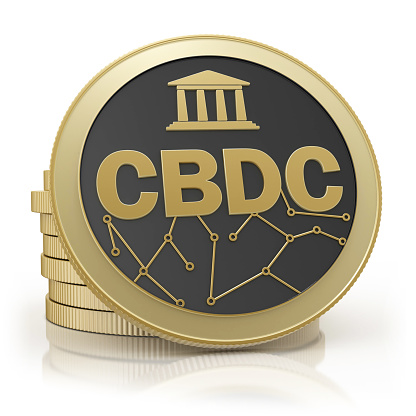
What Exactly is FinTech?
The term FinTech is derived by joining two words: finance and technology. In a nutshell, FinTech prompts the adoption of digital technology to innovate products and services such as mobile payments, personal finance, online banking and big data.
Many might think FinTech is a modern movement, yet the use of technology to assist financial services is by no means a recent phenomenon. The industry as a whole introduced credit cards in the 1950s, internet banking in the 1990s and since the turn of the millennium, contactless payment technology.
Yet, FinTech’s impact has only really been noticeable in the past three years, due to the COVID-19 pandemic. So how will FinTech continue to shape the banking industry?
Artificial Intelligence (AI)

Over the years, AI has become an integral part of FinTech banking services. AI, along with machine learning, is especially important in fraud detection. AI helps banks generate alerts whenever there might be a potential fraudulent transaction, and machine learning helps improves the accuracy of fraud detection over time.
In recent years, detection of attacks is becoming more difficult as the attacks become more sophisticated.
This is where AI and machine learning step in. The adoption of machine learning-driven statistical modeling, data aggregation, and process automation can transform how banks counter money laundering through technology.
For example, data aggregation platforms can connect customers’ financial accounts to authorized FinTech partners, providing information companies need to power their services. This assists in faster transaction validation.
Moreover, with machine learning algorithms, the banks can leverage historical data to predict and determine patterns of a fraud attack - preventing frauds even before they happen.
Mobile Banking

The prevalence of smartphones has forced banks to come up with mobile applications that offer convenient FinTech banking services. Today, most banks in the world have a mobile application where users can perform digital banking.
A mobile application provides quick access to funds. With a mobile application, the user can perform several banking functions such as quick bill pays, check deposits, account balance, statements, and many more.
Beyond that, FinTech has also given birth to biometric sensors, which work hand-in-hand with mobile applications. Apart from providing convenience and ease, biometric adoption ensures security as it eliminates the need for passwords. More advanced sensors are able to detect micro-veins, making them even more precise.
Blockchain Technology

What exactly is blockchain? Simply put, a blockchain is a distributed database is shared among nodes of a computer network. As a database, a blockchain stores information digitally. Blockchains are commonly used to maintain a secure and decentralized record of transactions.
Perhaps the most well-known, and earliest adopter of the blockchain is Bitcoin, the oldest and most established cryptocurrency.
Blockchains have been heralded as being a disruptive force to the finance sector, especially with the functions of payments and banking. Many proponents of decentralized finance (DeFi) often claim that blockchains will be the technology that makes banks obsolete, as blockchain applications usually have lower transaction fees and speed.
However, banks and blockchains are not mutually exclusive. One way banks can adopt blockchain technology is through Central Bank Digital Currencies (CBDCs).
Central Bank Digital Currencies (CBDC)

With the accelerated digitalization brought on by COVID-19 lockdowns, central banks all around the world have been exploring digital tokens that are pegged to their own fiat currency. As CBDCs, these digital dollars have the exact same value as paper dollars.
China became the world’s first major country to develop a digital currency (e-yuan), in a bid to push more Chinese citizens to go cashless while building greater resilience to tech giants-backed payment systems like WeChat Pay.
So how will CBDCs change the banking industry? CBDCs can reduce, or eliminate transaction fees entirely. Current payment systems like Visa, and Mastercard have a fee attached to each transaction, and eliminating these fees could lead to increased adoption of digital payments.
CBDCs also help in preventing illegal activity. By allowing the central bank to keep track of the exact location of every unit of the currency, it makes tax evasion and criminal activity much more difficult, since it would become impossible to use methods such as offshore banking and money laundering to hide financial activity.
Internet of Things (IoT) and Cloud Computing

Although these technologies are relatively nascent, some banks have already incorporated these into their daily operations. IoT refers to the interconnectivity of multiple appliances - think of how your phone can power the air conditioning in your home.
Examples of how banks adopt IoT is using beacons to send customized offers right to customers’ smartphones as soon as they enter the branch. Some ATMs also have livestream video support that allows customers to speak to tellers if they need assistance.
Cloud computing, meanwhile, sees its uses in customer relationship management (CRM). Banks use cloud-based CRM systems to manage customer data and interactions. This allows financial institutions to keep track of all customer interactions, regardless of location, or time of day.
Conclusion
FinTech is a complex system that unites the sectors of technology and financial services. Today, FinTech is even penetrating other sectors like retail, telecommunications, pharmaceuticals, and agriculture.
Governments, banks, and companies are showing increasing interest in them, and perhaps it is not far-fetched that such seemingly futuristic technologies will revolutionize the financial world in the years to come.

Comments